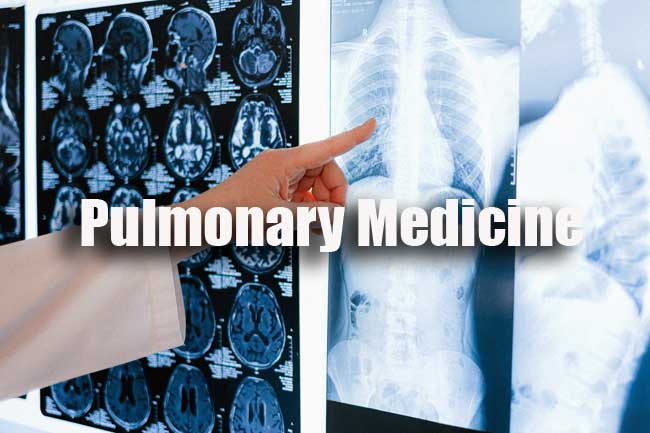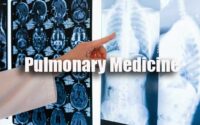Pulmonary Medicine Questions and Answers
Pulmonary Medicine Questions and Answers paper for the written examination is given below. Candidates who are looking for Pulmonary Medicine exam Questions and Answers paper can find in this section. The applied candidates who are getting prepared for the Pulmonary Medicine can view this page for the Pulmonary Medicine Last Ten Years Questions and Answers Papers.

Download the Pulmonary Medicine Questions and Answers & Solutions & make it as a reference for your exam preparation. Take advantage of these Pulmonary Medicine Questions and Answers Papers in a proper manner to get qualifying Marks. Last 5 years Pulmonary Medicine Questions and Answers Papers provided here. Candidates who are applied for the above exam can check and download the Pulmonary Medicine Questions and Answers Papers from here.
Questions and Answers on Pulmonary Medicine
1. In space travel which pulmonary function will not be change ?
(1) Vital Capacity
(2) FRC (Functional Residual Capacity)
(3) DLCO (Diffusion Lung Capacity)
(4) FEV 25-75%
2. Maximum prevalence of silicosis occurs in:
(1) Slate pencil workers
(2) Stone cutters
(3) Stone grinding
(4) Ceramic and potteries industry
3. Common complication seen in patient with silicosis are all EXCEPT :
(1) Tuberculosis
(2) Scar carcinoma
(3) Bacterial infections
(4) Fungal infection
4. Chest X-ray abnormalities in GOLD metal disease will be :
(1) Small, round opacities
(2) Reticular/reticulonodular interstitial fibrosis
(3) Bilateral irregular opacities
(4) Miliary shadow
5. Abestos related pulmonary effects will be all EXCEPT :
(1) Pleural plaques
(2) Benign pleural effusion
(3) COPD
(4) Lung cancer
6. Occupational asthma can be rarely caused by :
(1) Exposure to animal protein
(2) Exposure to plant protein
(3) Exposure to silica particles
(4) Exposure to grains
7. Major diagnostic criteria among all for hypertensitivity pneumonitis is
(1) Basilar crackles
(2) Decreased diffusion capacity
(3) Arterial hypoxemia at rest or with exercise
(4) BAL Lymptrocytosis
8. Interstitial Lung disease can be caused by exposure to all EXCEPT :
(1) Coal dust
(2) Asbestos
(3) Crystaling silica
(4) Beryllium
9. Rarest among all will cause of drug induced respiratory disease
(1) Nitrofurantion
(2) Sulfonamides
(3) INH, PAS
(4) Cephalosporins
10. Most common histological subtype of lung cancer associated with superior vena cava syndrome is :
(1) Small cell carcinoma
(2) Squamous cell carcinoma
(3) Adeno carcinoma
(4) Large cell carcinoma
11. Confirmation of superior vena cava obstruction can be done by
(1) X-Ray Chest PA
(2) Bronchoscopy
(3) C.T. Scan
(4) Contrast C.T. Scan
12. Commonest Histological subtype of Bronchogenic Carcinoma causes feature of cushing syndrome
(1) Carcinoid tumour
(2) Adeno carcinoma
(3) Small cell carcinoma
(4) Large cell carcinoma
13. Acromegaly is seen with following common subtype of Bronchogenic Carcinoma
(1) Carcinoid Syndrome
(2) Adeno Carcinoma
(3) Small Cell Carcinoma
(4) Large Cell Carcinoma
14. Endocrine disorder associated with paraneoplastic syndrome with lung cancer are all EXCEPT :
(1) SIADH
(2) Cushing’s syndrome
(3) Hypothyroidism
(4) Hypoglycemia
15. Common Middle mediastinum tumours are all EXCEPT :
(1) Bronchogenic cyst
(2) Enterogenous cyst
(3) Lymphagiomas
(4) Germ cell tumour
16. AHI (apnea-Hypopnea index) is derived from :
(1) Total number of apnoea and Hypoapnoea divided by total sleep time
(2) Total number of apnoea & Hypopnea divided by REM sleep time
(3) Total number of apnoea & Hypoapnoea divided by NREM sleep
(4) Total number of apnoea divided by total sleep time –
17. Uncommon pulmonary complication of progressive systemic sclerosis
(1) NSIP
(2) UIP
(3) Alveolar cell carcinoma
(4) Pleural effusion
18. All of the following are pulmonary manifestation of SLE EXCEPT :
(1) Lupus pneumonitis
(2) Vanishing Lung syndrome
(3) Pleural effusion
(4) Progressive pulmonary fibrosis
19. Common clinical features of pulmonary hypertension are EXCEPT :
(1) Left ventricular heave
(2) Right ventricular gallop
(3) Tricuspid regurgitation murmer (systolic)
(4) Ascites
20. Pulmonary complication of thyroid dysfunction will be :
(1) Recurrent Pneumonia
(2) Pneumothorax
(3) Sleep apnea
(4) Hilar adenopathy
| Practice Set | MCQs |
| Quiz | Questions and Answers |
21. All of the following are pulmonary disorder associated with gastro esophageal reflux EXCEPT :
(1) Bronchial Asthma
(2) Idiopathic Pulmonary fibrosis
(3) Lung abscess
(4) Mediastinal emphysema
22. Which is not a pulmonary complication of malaria ?
(1) Pulmonary edema
(2) Pneumonias
(3) Acute asthma like presentation
(4) Pneumothorax
23. All of the following can be complication of tuberculosis in pregnancy EXCEPT :
(1) Spontaneous abortious
(2) Hydramnios
(3) Intrauterine death
(4) Premature labor
24. Systemic feature of COPD include all EXCEPT :
(1) increase risk of CVS disease
(2) Depression
(3) Sleep Apnea
(4) Cachexia
25. The optimum hrs in long term oxygen therapy is :
(1) At least 12 hrs daily
(2) At least 18 hrs daily
(3) At least 16 hrs daily
(4) None of the above
26. ECG finding in corpulmonale include all EXCEPT :
(1) Right Axis deviation
(2) R/S amplitude ration in V6<1
(3) S1Q3T3 pattern
(4) R/S amplitude ration in V6>1
27. Common indication of heliox therapy include :
(1) Acute asthma
(2) Chr. Obstructive pulmonary disease
(3) Critically ill children
(4) All of above
28. Which factor causes a shift in Oxygen dissociation curve to left ?
(1) High Po2
(2) Low PH
(3) Low Po2
(4) High temperature
29. All are true with regards to alpha1 antitrypsin EXCEPT :
(1) Itis a protease inhibitor
(2) It shows polymorphism
(3) Deficiency lead of emphysema in lung
(4) Deficiency is associated with oedema
30. In respiratory acidosis patient will show which of the following features
(1) A low Pco2
(2) Lowered plasma bicarbonate
(3) Reduced rate and depth of respiration
(4) Decrease the hydrogen ion concentration in Plasma
31. A young man with pulmonary tuberculosis present with massive recurrent haemoptysis. For angiographic treatment with which vascular structure should be evaluated for
(1) A pulmonary artery
(2) Bronchial artery
(3) Pulmonary vein
(4) Superior vena cava
32. A 65 years old man who has been on bed rest for past 15 days complain of chest pain and breathlessness. The chest X-ray is normal, next step investigation should be :
(1) Lung Ventilation perfusion scan
(2) Echocardiography
(3) Pulmonary arteriography
(4) Pulmonary venous wedge angiography
33. A 25 year old man presented with fever, cough, expectoration and breathlessness of 2 month duration Contrast Enhanced CT of chest shows bilateral upper lobe fibrotic lesion and mediastinum has large necrotic nodes with peripheral rim enhancement. Which one of the following is most probable diagnosis ?
(1) Tuberculosis
(2) Sarcoidosis
(3) Lymphoma
(4) Silicosis
34. A cause of homogenous opacity in X-ray is all EXCEPT
(1) Pleural effusion
(2) Diaphragmatic Hernia
(3) Massive consolidation
(4) Emphysema
35. Which is objective sign of identifying Pulmonary plethora in a chest radiography ?
(1) Diameter of main pulmonary artery > 16 mm
(2) Diameter of left pulmonary artery > 16mm
(3) Diameter of descending right pulmonary artery > 16 mm
(4) Diameter of descending left pulmonary artery > 16 mm
36. Which of the following causes rib notching on chest radiography ?
(1) IVC occlusion
(2) Coarctation of aorta
(3) Bidirectional Glem shung
(4) Modified Blalock Taussig shung
37. The most definitive method of diagnosis pulmonary embolism
(1) Pulmonary arteriography
(2) Radio isotope perfusion pulmonary scintigraphy
(3) EKG
(4) Vegography
38. Most diagnostic of pulmonary embolism in a high risk case is :
(1) Multi detector CT angiography
(2) Catheter angiography
(3) D-Dimer
(4) Ventilation perfusion scan
39. Hamptons hump is seen
(1) Bronchial carcinoma
(2) Pneumonia
(3) Pulmonary embolism
(4) Hodgkin disease
40. Which of the following features is not seen in ileocaecal tuberculosis ?
(1) Pulled up caecum
(2) Apple core appearance
(3) Narrowing of distal end of caecum
(4) String Sign
41. Obliteration of left heart border in PA chest X-ray is suggestive of :
(1) Lingular pathology
(2) Left Upper lobe lesion
(3) Left hilar lymph nodes
(4) Left lower lobe lesion
42. Cause of a cavitating lesion in the chest radiograph are all EXCEPT :
(1) Hamartoma
(2) Squamous carcinoma of the bronchus
(3) Caplan’s syndrome
(4) Haematoma
43. Lymphangio myomatosis is characterized by all of the following EXCEPT :
(1) Post menopausal women
(2) Recurrent chylous pleural effusions
(3) Ascites
(4) Recurrent spontaneous pneumothorax
44. “Golden S” sign is seen in:
(1) Right upper lobe collapse
(2) Left upper lobe collapse
(3) Right middle lobe collapse
(4) Lower lobe collapse
45. Newborn chest X-ray with respiratory distress shows multiple air containing lesions in left hemithorax and mediastinal shift is suggestive of :
(1) Neonatal emphysema
(2) Diaphragmatic hernia
(3) Pneumatoceles
(4) Congenital Lung cysts



